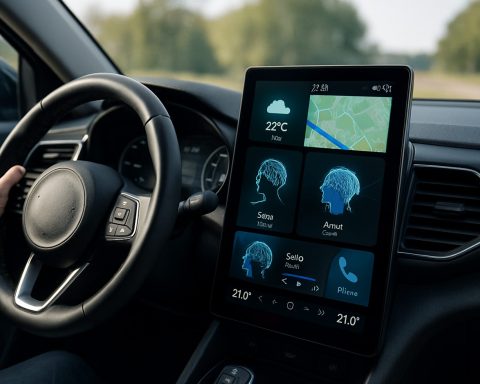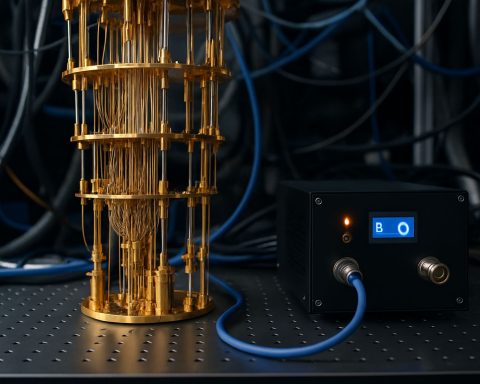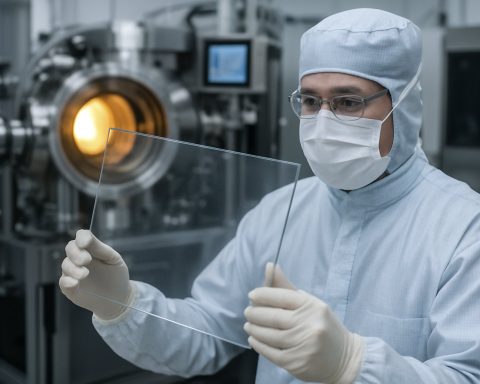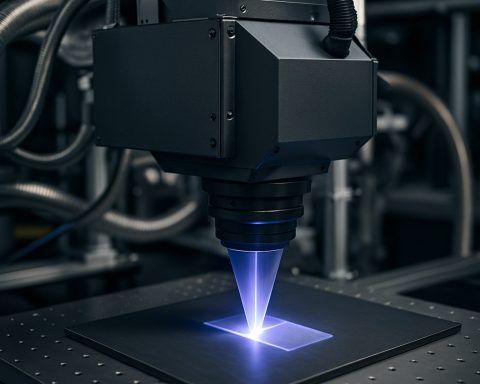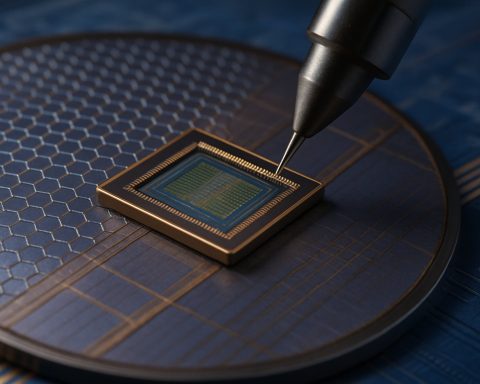- Tesla is launching a new affordable electric vehicle (EV), expected to be priced under $30,000, possibly with help from federal incentives.
- This entry-level Tesla model will focus on essentials—less luxury, simplified interiors, but promises to retain the brand’s performance and prestige.
- The move directly challenges current budget EV leaders like the Nissan Leaf, Hyundai Kona, and Chevrolet Equinox EV, which offer varying levels of range, comfort, and practicality.
- Tesla aims to make electric mobility accessible to more people, pushing the industry toward affordable electrification as the new standard.
- The main test ahead: whether Tesla can maintain its innovative appeal and market dominance while sacrificing premium features for a broader audience.
Electric dreams have always soared with a hefty price tag, but the tides are shifting. Tesla, known for shaking up the auto industry, is poised to do it again. This June, whispers and long-standing promises will materialize as an affordable Tesla EV rolls off the production line—setting a new battleground for mass-market electric vehicles under $30,000.
The auto world watches with bated breath. From the wind-tossed plains of Texas to the crowded city blocks of Shanghai, buyers have craved a Tesla within reach. The upcoming model is rumored to echo the familiar silhouette of the Model Y—sleek, functional, universally appealing—but stripped of its gilded trimmings. Gone may be the heated seats and intricate ambient lighting. Imagine cloth replacing vegan leather, a single-hue cabin glow, a focus on essentials rather than extravagance. The sound of acoustic glass may fade behind you only up front, as rear windows settle for basics. Yet the heart—the thrill of acceleration, the sculpted frame, the brand prestige—will remain, even as Tesla’s engineers find ways to pare costs without losing the signature drive.
Cost is the watchword. Analysts forecast this Tesla could land below $30,000, possibly factoring in federal incentives that have become a lifeline for EV adoption in the United States. That price would undercut every sibling in Tesla’s garage and jolt the EV market for good reason.
But competition simmers in the wings. The Nissan Leaf, humble and pragmatic, still claims the title of cheapest new EV in America, its cabin roomy, its price svelte, its range a modest 149 miles—best for city dwellers and suburban commuters. Stroll over to the Hyundai Kona and you find a sportier, more capacious ride, extending its electric reach above 200 miles, pleasing drivers with comfort and usability. Meanwhile, the Chevrolet Equinox EV, assembled in Canada but wearing its Detroit heritage, ups the ante with a remarkable 319-mile range. That number alone challenges Tesla’s future dominance in the entry-level market.
What’s at stake is more than just price or range. This is a test: Will Tesla’s core allure survive, mesmerizing buyers with the promise of innovation and cutting-edge tech, even when luxury bows to value? Or, will consumers seeking practicality, spaciousness, or familiarity gravitate toward stalwarts like Nissan and Chevrolet, whose EVs speak the language of comfort and reliability?
Tesla has never hidden its ambition to accelerate the world’s transition to sustainable energy—a vision that, until now, seemed just out of reach for millions of ordinary drivers. With this newest move, the market itself could transform. Car shoppers accustomed to compromises can anticipate a future where electrification is no longer a luxury, but an expectation.
For readers hungry for details and updates in Tesla’s ever-evolving journey, the official Tesla website remains a font of breaking news and innovation. As the doors to the electric future swing wider, a simple question lingers: Is the magic of Tesla ready to become truly mainstream, or will the spell be broken in pursuit of affordability?
Takeaway: The imminent arrival of a $30,000 Tesla could tilt the entire EV landscape—provided the brand can preserve its essential spark, even as it trims the luxuries. For consumers, the era of affordable electrification is about to accelerate—and everyone is watching to see if the gamble pays off.
Could a $30K Tesla Crush the Competition? Expert Insights, Real-World Tips, and Industry Secrets Revealed
The Game-Changer: Tesla’s Affordable EV—What’s Really at Stake?
Tesla’s upcoming affordable electric vehicle is generating buzz. But beneath the headlines lies a web of factors that will influence whether this new model truly revolutionizes the mass-market EV segment—or merely shakes it. Let’s delve deeper into what’s at stake, the nuances other outlets missed, and actionable insights for smart shoppers.
—
Unexplored Facts: What Makes This $30K Tesla Different?
1. Battery Innovations and Cost Reductions
Tesla’s commitment to affordability heavily relies on advances in battery technology. The company’s 4680 cell technology is expected to play a major role:
– 4680 Cells: Larger, more energy-dense, and cheaper to produce than the current 2170 cells.
– Streamlined Assembly: “Structural battery packs” double as the vehicle floor, further cutting complexity and cost.
– Localized Manufacturing: Leveraging Giga Texas and Giga Shanghai allows Tesla to reduce shipping costs and tariffs, lowering the MSRP globally ([Tesla Investor Relations](https://www.tesla.com)).
2. Federal and State Incentives
With the US EV tax credit reinstated for some Tesla models under the Inflation Reduction Act, the real cost for buyers in the US could drop to ~$25,000 or less—depending on individual eligibility ([U.S. Department of Energy](https://www.energy.gov)).
– Check local incentives: Additional rebates exist in states like California, New Jersey, and Colorado, sometimes lowering effective prices by $2,000–$5,000 more.
3. Simpler Manufacturing, Lower Maintenance
Embracing a minimalist interior not only saves on initial factory costs but translates to fewer parts that could break or require servicing—a long-term value bonus for buyers.
4. Real World Range and Charging
While rivals like Chevy’s Equinox claim 319 miles, Tesla’s Supercharger network offers a unique selling point:
– Supercharger Network Access: Over 50,000 fast chargers worldwide ([Tesla.com](https://www.tesla.com)), supporting hassle-free road trips.
—
Pros & Cons at a Glance
Pros
– Lower cost of entry—below $30,000 before incentives
– Access to reliable Supercharger network
– Robust over-the-air software updates keep the car future-proof
– High brand equity and resale value
– Lower running and maintenance costs vs. gas cars
Cons
– Stripped-down interior may not appeal to luxury-focused buyers
– Potential initial supply shortages and long wait times
– Resale value could fluctuate if competitors quickly catch up on price/features
– Features like heated seats, premium audio, or enhanced automation may be optional or absent
—
Reviews & Comparisons: Tesla vs. Rivals
| Model | MSRP (Before Incentives) | EPA Range (mi) | Quick Charging Network | Key Features |
|———————|————————-|—————-|———————–|————————–|
| Tesla (upcoming) | ~$30,000 | 220–250 | Yes (Supercharger) | OTA updates, Autopilot |
| Chevy Equinox EV | ~$34,995 | 319 | Yes | Spacious, USA-made |
| Nissan Leaf | ~$29,280 | 149 | Limited | Proven, city-friendly |
| Hyundai Kona EV | ~$33,550 | 259 | Yes | Roomy, tech-forward |
*Estimated range & feature availability; check official information upon launch.
—
Security, Sustainability & Ownership Tips
Security: Tesla vehicles include advanced security features by default (Sentry Mode, PIN to Drive, mobile monitoring).
Sustainability: Tesla’s move to truly mass-market EVs could spark a tipping point in global adoption, helping reduce emissions—especially if supported by clean energy grids.
Life Hacks: Lower Your Total Cost
– Use home charging (cheaper than Supercharging over time)
– Apply for all available federal, state, and local rebates
– Consider leasing if worried about technology depreciation
—
Industry Trends & Future Predictions
The launch of a sub-$30K Tesla is likely to:
– Pressure competitors to drop prices or enhance range/features
– Accelerate development of cheaper battery chemistries (e.g., LFP—lithium iron phosphate)
– Shift the EV landscape from luxury to “mainstream norm”
Bloomberg and Reuters analysts predict that the global EV market could see double-digit annual growth through 2030, with affordable options making up an increasingly large share.
—
Most Pressing Reader Questions—Answered
Will features like Autopilot or Full Self-Driving be standard?
Likely not. These will remain paid upgrades, keeping base price low.
What about real-world range—will it be enough?
For urban and suburban drivers, 200–250 miles covers daily needs; for road trips, the Supercharger network bridges the gap.
Will quality suffer?
Initial trims may feel sparse, but Tesla’s core build quality (chassis, drivetrain, software) generally rates well according to independent reviews from Consumer Reports, J.D. Power, and Edmunds.
Is it worth waiting for this model, or buying an EV now?
If you value lower price & latest tech, hold off. If you need a car immediately, consider current incentives on existing models as deals may disappear post-launch.
—
Actionable Recommendations and Quick Tips
– Monitor the official Tesla website for live updates and reservation details.
– Gather documentation for tax credits early—many EVs sell out quickly when incentives are high.
– Compare local dealer offers on rival EVs—as the competition heats up, incentives may become more generous.
– Charge at home for maximum savings, leveraging off-peak electric rates if possible.
– Test drive multiple models; cabin minimalism is polarizing—make sure it suits your lifestyle.
—
Final Take: Seize the EV Moment
Tesla’s upcoming $30K model is set to transform EV ownership from luxury dream to attainable reality. Keeping an eye on specs, incentives, and the evolving competitive landscape will help you make the smartest decision for your driving needs and budget.
For the latest, check the official Tesla website and trustworthy automotive analysts like Kelley Blue Book, Consumer Reports, and Bloomberg.
—
Keywords: affordable Tesla, mass-market EV, electric vehicle incentives, Tesla Supercharger, battery innovation, EV comparisons, Tesla vs Chevy Equinox, Tesla industry trends

